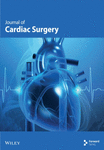Does Coronary Endarterectomy Adversely Affect the Results of Bypass Surgery?
Supported by Grant AN1927 from the Heart and Stroke Foundation of Ontario.
Presented at the 8th International Congress, Cardiostim‘92, Nice, France, June 17–20, 1992.
Abstract
Coronary endarterectomy (TEA) is performed infrequently during coronary artery bypass graft (CABG) surgery due to the impression that it results in higher rates of myocardial infarction (MI), operative mortality (OM), and poor long-term outcome. To assess the effectiveness of TEA, 1, 228 patients undergoing isolated CABG between 1982 and 1989 were evaluated. The incidence of OM (3.2%) and MI (6.0%) following TEA was similar to conventional CABG (OM = 3.8%, MI = 5.5%, p = NS). The incidence of low output syndrome (LOS, 15.1%) and intraaortic balloon pump insertion (IABP, 4.5%) following TEA was similar to conventional CABG (LOS = 12.6%, IABP = 6.0%, p = NS). The highest level of the cardiac specific isoenzyme (CK-MB) released following surgery was similar for the TEA group (46 ± 49) and conventional CABG group (42 ± 44, p = NS). Ventricular dysfunction, urgent surgery, left main stenosis, advanced age, and reoperative surgery were similar in the TEA and conventional CABG groups. At a mean follow-up of 4.2 years, 65.6% of all TEA patients were free of angina, 44.4% were gainfully employed, and 62% were in New York Heart Association Class I. The incidence of late myocardial infarction was 5.4%. The 5-year actuarial survival was 90%. Patients with double TEA and limited TEA (< 3 cm TEA specimens) tended to have a lower 5-year survival. With strict criteria for selection of TEA patients and with significant technical experience, the short- and long-term results of TEA are comparable to conventional CABG.




